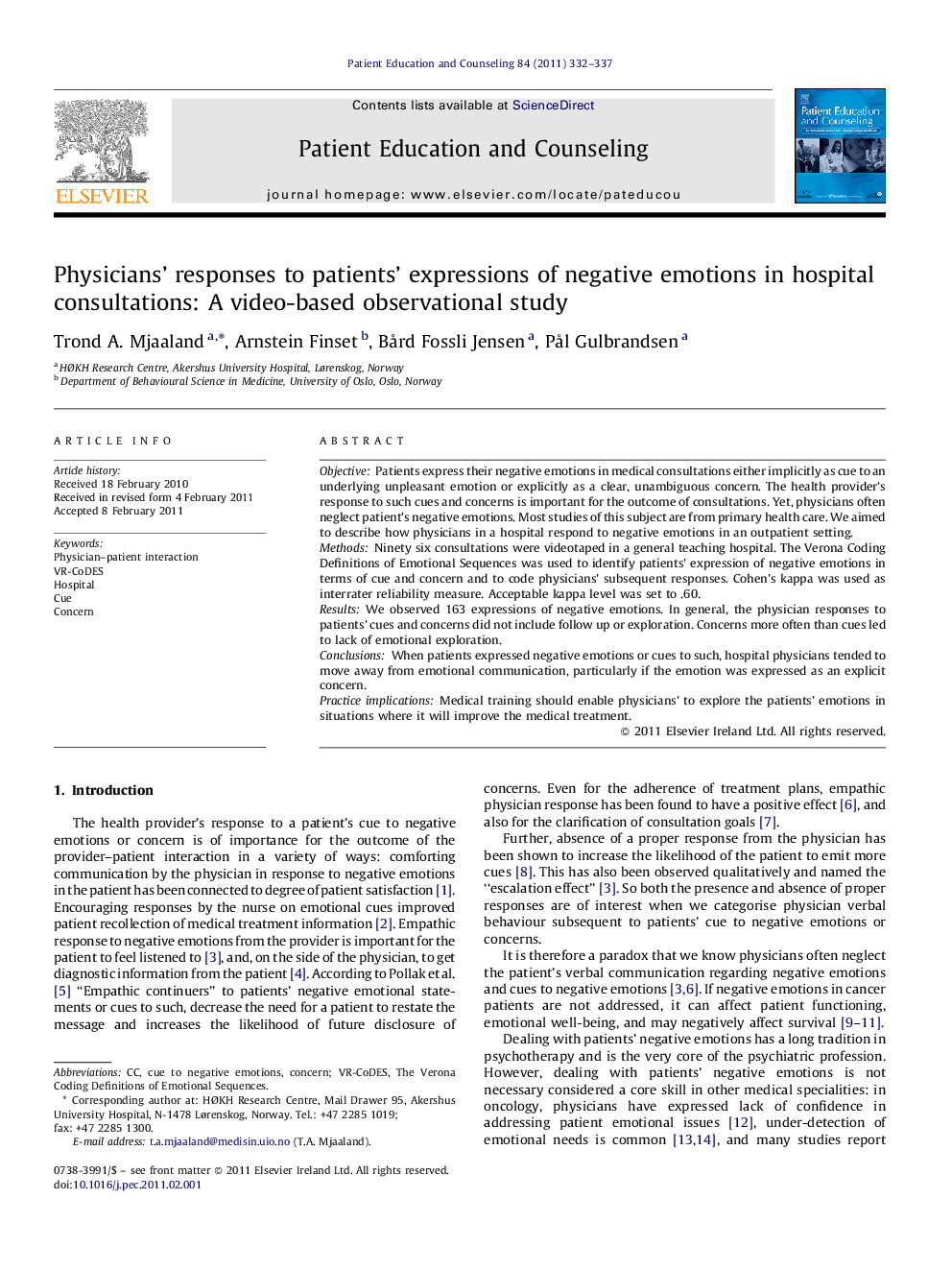| کد مقاله | کد نشریه | سال انتشار | مقاله انگلیسی | نسخه تمام متن |
|---|---|---|---|---|
| 3814336 | 1246009 | 2011 | 6 صفحه PDF | دانلود رایگان |

ObjectivePatients express their negative emotions in medical consultations either implicitly as cue to an underlying unpleasant emotion or explicitly as a clear, unambiguous concern. The health provider's response to such cues and concerns is important for the outcome of consultations. Yet, physicians often neglect patient's negative emotions. Most studies of this subject are from primary health care. We aimed to describe how physicians in a hospital respond to negative emotions in an outpatient setting.MethodsNinety six consultations were videotaped in a general teaching hospital. The Verona Coding Definitions of Emotional Sequences was used to identify patients’ expression of negative emotions in terms of cue and concern and to code physicians’ subsequent responses. Cohen's kappa was used as interrater reliability measure. Acceptable kappa level was set to .60.ResultsWe observed 163 expressions of negative emotions. In general, the physician responses to patients’ cues and concerns did not include follow up or exploration. Concerns more often than cues led to lack of emotional exploration.ConclusionsWhen patients expressed negative emotions or cues to such, hospital physicians tended to move away from emotional communication, particularly if the emotion was expressed as an explicit concern.Practice implicationsMedical training should enable physicians’ to explore the patients’ emotions in situations where it will improve the medical treatment.
Journal: Patient Education and Counseling - Volume 84, Issue 3, September 2011, Pages 332–337